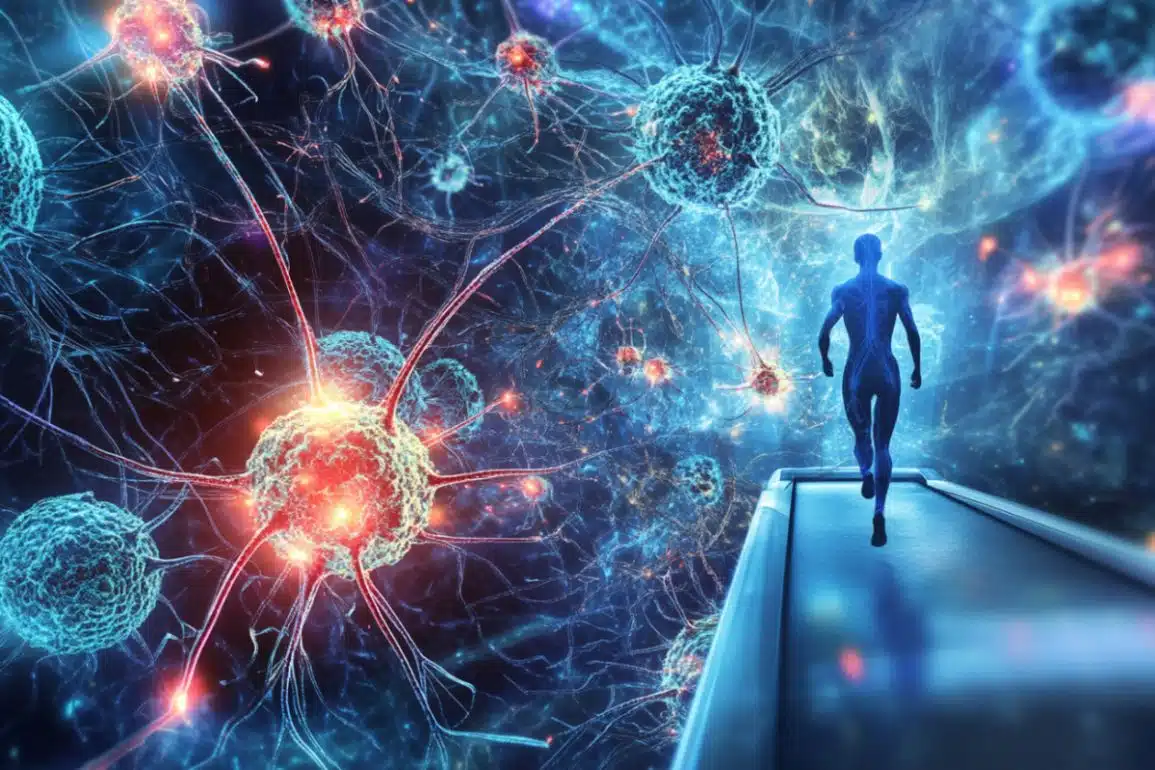https://neurosciencenews.com/exercise-alzheimers-genetics-29267/June 13, 2025
Summary:
Using cutting-edge RNA sequencing, researchers mapped how exercise affects specific brain cell types in a model of Alzheimer’s disease. They found that physical activity alters gene activity in microglia and a newly identified type of astrocyte linked to blood vessels, which may protect memory.
The metabolic gene Atpif1 emerged as a key player in promoting the birth of new neurons. These findings were confirmed in human brain tissue, offering new paths for cell-targeted Alzheimer’s therapies.
Key Facts:
● Cell-Specific Response: Exercise changed gene activity in microglia and newly discovered neurovascular astrocytes.
● Neuron Formation: The gene Atpif1 was identified as a potential driver of neurogenesis.
● Human Validation: Findings from the mouse model matched patterns seen in human Alzheimer’s brain tissue.
Using advanced single-nuclei RNA sequencing (snRNA-seq) and a widely used preclinical model for Alzheimer’s disease, researchers from Mass General Brigham and collaborators at SUNY Upstate Medical University have identified specific brain cell types that responded most to exercise.These findings, which were validated in samples from people, shed light on the connection between exercise and brain health and point to future drug targets.

 exercise-genetics-Alzheimers-neurosicnce-1155x770.jpg.webp (93.6 kB . 1155x770 - viewed 138 times)
exercise-genetics-Alzheimers-neurosicnce-1155x770.jpg.webp (93.6 kB . 1155x770 - viewed 138 times)To ensure the findings were relevant to humans, the team validated their discoveries in a large dataset of human Alzheimer’s brain tissue, finding striking similarities. Credit: Neuroscience News
Results are published in
Nature Neuroscience.
“While we’ve long known that exercise helps protect the brain, we didn’t fully understand which cells were responsible or how it worked at a molecular level,” said senior author Christiane D. Wrann, DVM, PhD, a neuroscientist and leader of the Program in Neuroprotection in Exercise at the Mass General Brigham Heart and Vascular Institute and the McCance Center for Brain Health at Massachusetts General Hospital.
“Now, we have a detailed map of how exercise impacts each major cell type in the memory center of the brain in Alzheimer’s disease.”
The study focused on a part of the hippocampus—a critical region for memory and learning that is damaged early in Alzheimer’s disease.
The research team leveraged single-nuclei RNA sequencing, a relatively new technologies that allow researchers to look at activity at the molecular level in single cells for an in-depth understanding of diseases like Alzheimer’s.
The researchers exercised a common mouse model for Alzheimer’s disease using running wheels, which improved their memory compared to the sedentary counterparts.
They then analyzed gene activity across thousands of individual brain cells, finding that exercise changed activity both in microglia, a disease-associated population of brain cells, and in a specific type of neurovascular-associated astrocyte (NVA), newly discovered by the team, which are cells associated with blood vessels in the brain.
Furthermore, the scientist identified the metabolic gene Atpif1 as an important regulator to create new neurons in the brain.
That we were able to modulate newborn neurons using our new target genes set underscores the promise our study,” said lead author Joana Da Rocha, PhD, a postdoctoral fellow working in Dr. Wrann’s lab.
To ensure the findings were relevant to humans, the team validated their discoveries in a large dataset of human Alzheimer’s brain tissue, finding striking similarities.
“This work not only sheds light on how exercise benefits the brain but also uncovers potential cell-specific targets for future Alzheimer’s therapies,” said Nathan Tucker, a biostatistician at SUNY Upstate Medical University and co-senior of the study.
“Our study offers a valuable resource for the scientific community investigating Alzheimer’s prevention and treatment.”








